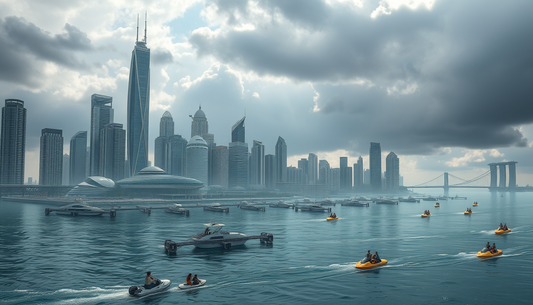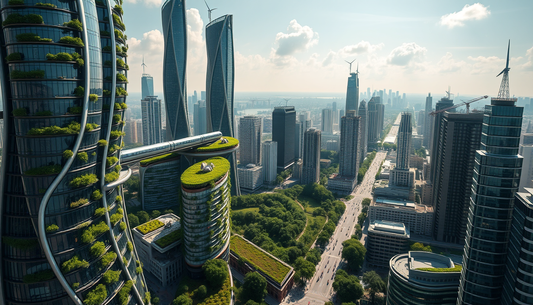Global warming and rising sea levels are increasingly pressing challenges for coastal cities around the world. As climate change continues, these urban areas are facing a range of threats that threaten their very survival. From recurring flooding to coastal erosion, increasingly violent storms to the salinization of groundwater, coastal cities must adapt rapidly to ensure the safety and well-being of their residents.
The impact of global warming on coastal cities
Global warming is causing sea levels to rise at an unprecedented rate. According to estimates by the Intergovernmental Panel on Climate Change (IPCC), sea levels could rise by more than a meter by the end of the century, with serious consequences for coastal cities around the world. These urban areas, often densely populated and with critical infrastructure concentrated along the coastline, are particularly vulnerable to the effects of this phenomenon.
Recurring flooding is one of the most obvious threats. Storm surges and tides, exacerbated by rising sea levels, can submerge entire neighborhoods, damage buildings and infrastructure, and threaten the lives of residents. In addition, coastal erosion is eroding beaches and cliffs, threatening the stability of roads, ports, and other structures vital to the economy and life of cities.
Another significant problem is the salinization of aquifers, which makes fresh water undrinkable and compromises the water supply of cities. This phenomenon, caused by the intrusion of salt water, can have serious repercussions on public health and urban agriculture.
Adapting to Climate Change: Strategies for Coastal Cities
Faced with these challenges, coastal cities need to adopt adaptation strategies to increase their resilience to climate change. Some of the key actions to be taken include:
Coastal protection
The construction of barriers, dams and artificial reefs can help contain the advance of the sea and protect urban areas from flooding. In addition, the restoration and conservation of coastal ecosystems, such as mangroves and dunes, can play a fundamental role in the natural defense of cities.
Resilient Urban Planning
Cities need to rethink their planning and development, moving vulnerable areas inland and concentrating critical infrastructure in safer zones. Stricter building codes and integrating nature-based solutions, such as parks and wetlands, can help mitigate risks.
Water management
Investing in more efficient drainage and stormwater management systems, as well as desalination technologies, can help cities address water scarcity and groundwater salinization.
Emergency preparedness and response
Cities need to develop emergency plans and early warning systems to deal with extreme weather events. Educating the population and creating safe shelters are equally important to ensure the safety of citizens.
Collaboration and funding
Addressing the challenges of global warming and sea level rise requires the involvement of all levels of government, as well as private sector and civil society partners. In addition, adequate financing to invest in adaptation and resilience projects is essential.
Conclusions
Global warming and rising sea levels are increasingly serious threats to coastal cities around the world. These urban areas must act quickly to adapt to climate change and ensure the safety and well-being of their inhabitants. Through a combination of technological, infrastructural and nature-based solutions, coastal cities can become more resilient and prepared to face the challenges of the future. Only through concerted efforts at local, national and international levels will it be possible to protect these precious urban areas.







